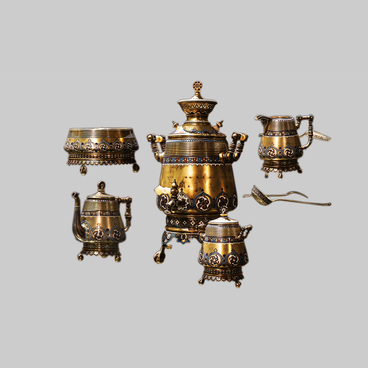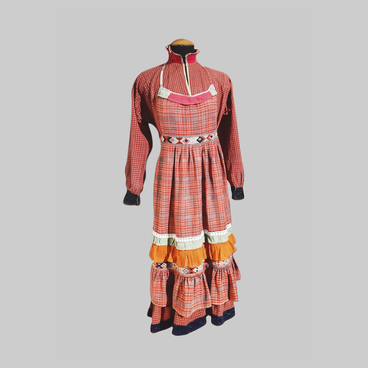Cannons appeared in Russia in the 14th century. In the 18th century, they could be breech-loading or muzzle-loading. The first option was more convenient, but gunpowder flaws and unreliable breeches, which sometimes flew out of the barrel when it was fired, resulted in it not being used for a long time. Convinced that it was ‘impossible and terrifying’ to use such weapons, cannon makers would produce only muzzle-loaded cannons with solid bore bottoms all the way from the 17th century to the end of the 19th century. The solid bore bottom of such cannons had a special cavity called a chamber. At first, a loading shovel was used to take gunpowder from a barrel and put it into the chamber.
Loading shovels were replaced with cartridge bags with a precisely calculated amount of gunpowder only in the middle of the 18th century. This innovation was introduced by Count Shuvalov, a prominent statesman in charge of the Russian artillery during Elizaveta Petrovna’s rule.
The exhibition features a six-pounder cast iron field cannon on a carriage, with cast iron cannonballs and grenades next to it. In those days, weapons were named after the weight of their projectiles: for example, the six-pound cannon was loaded with six-pound (about 2.5 kg) cannonballs. The ammunition load consisted only of a cannonball and canister shot. The cannon was loaded from the muzzle: a cartridge bag with gunpowder, a cannonball, and a wad (a plug fixing the charge) were put into the barrel and rammed down with a ramrod. A reed flash tube filled with gunpowder was inserted into the vent in the breech and set on fire with a slow match or a red-hot rod.
The slow match ignited the powder charge, and the resulting gases pushed the cannonball out of the bore. After the shot, the bore was cleaned from powder fouling with a wet bore brush. The smoldering parts of the cartridge bag were also removed from the bore. If left untouched, they could cause a premature explosion during the next loading.
Field artillery carriages were made of oak wood.
Loading shovels were replaced with cartridge bags with a precisely calculated amount of gunpowder only in the middle of the 18th century. This innovation was introduced by Count Shuvalov, a prominent statesman in charge of the Russian artillery during Elizaveta Petrovna’s rule.
The exhibition features a six-pounder cast iron field cannon on a carriage, with cast iron cannonballs and grenades next to it. In those days, weapons were named after the weight of their projectiles: for example, the six-pound cannon was loaded with six-pound (about 2.5 kg) cannonballs. The ammunition load consisted only of a cannonball and canister shot. The cannon was loaded from the muzzle: a cartridge bag with gunpowder, a cannonball, and a wad (a plug fixing the charge) were put into the barrel and rammed down with a ramrod. A reed flash tube filled with gunpowder was inserted into the vent in the breech and set on fire with a slow match or a red-hot rod.
The slow match ignited the powder charge, and the resulting gases pushed the cannonball out of the bore. After the shot, the bore was cleaned from powder fouling with a wet bore brush. The smoldering parts of the cartridge bag were also removed from the bore. If left untouched, they could cause a premature explosion during the next loading.
Field artillery carriages were made of oak wood.



